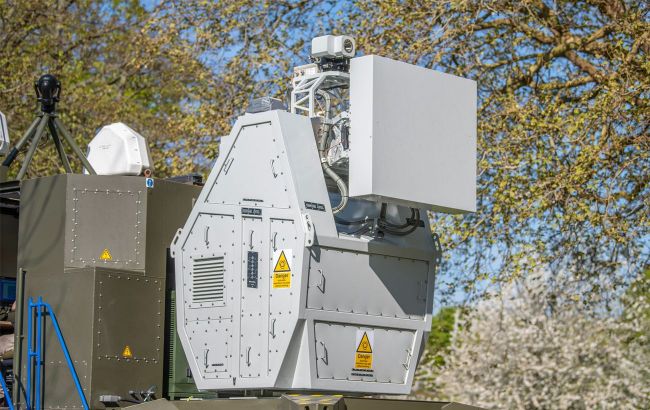UK tested weapons that may appear in Ukraine
 Photo: RapidDestroyer weapon successfully tested by the UK (x.com jcartlidgemp)
Photo: RapidDestroyer weapon successfully tested by the UK (x.com jcartlidgemp)
The United Kingdom has successfully tested a RapidDestroyer microwave weapon to destroy "flocks" of drones. It could be used at the front in Ukraine, Financial Times reports.
"The UK Ministry of Defence has successfully trialled a new type of electronic weapon to combat drones that has potential implications for modern battlefields, including in Ukraine," the article says.
RapidDestroyer
RapidDestroyer was developed by a consortium led by the French defense conglomerate Thales and uses powerful radio frequency to disable or "fry" drone electronics from a distance.
In a recent test, the weapon neutralized two swarms of eight drones, the UK Ministry of Defense reported, “the project saw more than 100 drones being tracked, engaged and defeated using the weapon across all trials.”
The technology is still in its early stages. RapidDestroyer is transported on a truck bed and requires a lot of power.
Analogues of RapidDestroyer
The agency reminds that RapidDestroyer has analogues:
- American Tactical High-power Operational Responder (THOR), developed by the US Air Force and many private companies, is the size of a shipping container;
- Leonidas, developed by the Epirus technology company for the US Navy and is designed for use on ships.
How RapidDestroyer works
The new electromagnetic weapon technology fires a broad beam of energy that is relatively inexpensive and capable of destroying multiple drones simultaneously.
According to experts whose comments are cited in the article, this makes the weapon effective when confronting an opposing swarm, although its indiscriminate nature makes it less suitable for protecting infrastructure, such as an airport.
"High-powered microwave systems are potentially a very effective tool for defence against large numbers of [drones] and potentially cruise missiles as well, in circumstances where their wide cone of effect does not create more problems than it solves," says Justin Bronk of the Royal United Services Institute in London.
In certain circumstances, such as on bases in the desert, or the kinetic front line, or on warships at sea, yes, they certainly provide a significant increase in anti-drone capabilities, but they are not a one-size-fits-all solution.
According to one senior British military official, drones have become a significant force on the battlefield, but they have to overcome a wall of electronic interference.
"It’s a measures [vs] countermeasures game," he said, adding that there are ways to protect drones from microwave weapons, such as shielding their circuitry with materials that block external electric fields.
Eventually, the technology will also be used for missile defense.
"The US Navy has announced it will test a high-power microwave weapon known as Project Meteor in 2026 that is capable of taking down fast-moving anti-ship ballistic missiles," Financial Times states.
Ukrainian laser weapon Tryzub
Recently, Ukraine has presented the laser weapon Tryzub for the first time. The system is capable of destroying drones and aircraft at a distance of up to 5,000 meters.
It can destroy attack drones, bombs, cruise and ballistic missiles at a distance of up to 3,000 meters and helicopters, airplanes, and reconnaissance drones at a distance of up to 5,000 meters.

